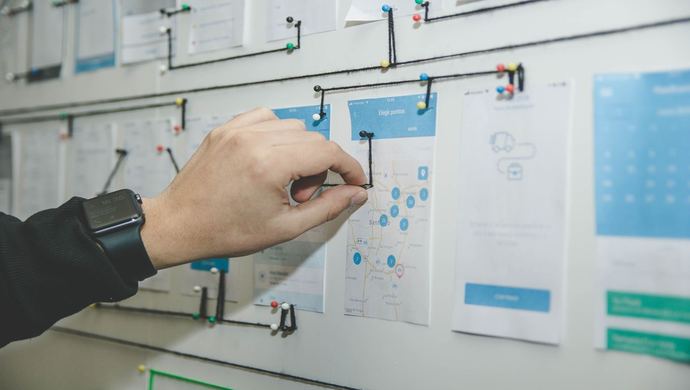UX design is reversing that trend and putting the needs of the user first

When designing a digital presence, whether it is a website or a mobile app, attractive graphics and engaging content are not the only things that matter. One aspect of web and app design that many designers still overlook is the need for good user experience design. But, what exactly is user experience design (UX Design), and why does it matter so much? Here’s why every business must think about the user experience when they design websites and apps.
User experience design is often used to describe the usability of an application or the user interface. The true meaning of UX design, though, goes far beyond that. It encompasses the entire process of software design and development. It includes branding, functionality, design, integration, and usability.
The designers must look beyond merely creating usable products. They also consider the user’s pleasure and enjoyment in acquiring and using the product. UX design is the process of building applications that are relevant and meaningful. Apps that users want to use.
So, how can UX design benefit a business?
Encourages the use of interaction
Creating content is not enough. You need to create content that people will want to interact with. That includes written content, images, advertisements and calls to action. It includes techniques that encourage user interaction.
These techniques include producing content that will appeal to the target audience.
Also Read: Branding basics: 3 design essentials to help kick off your business
It also includes personalisation features, such as “You may also like” types of functions. The designers will also be looking at consistency throughout an app or site. Software that is predictable and comfortable to use is software that people will want to use.
Generates loyalty
It creates customer loyalty through great experiences. An easy to use app or website backed by great service will encourage a user to use the then again. To do this, the designer will create a customer journey map (CJM). This maps a user’s entire journey through the site or app.
This journey will be thoroughly tested to ensure that a user’s interaction with the product is as smooth and trouble-free as possible. It’s putting the design team in the shoes of the user.
Generates recommendations
A good UX design encourages word of mouth recommendations. The ease of use of a well-designed site or application and the usefulness of it will encourage people to tell others about the product.
A part of UX is to make sharing easy. A free recommendation from a user is far more potent than a paid-for advertisement.
Reduces development costs
It keeps a project within budget and lowers development costs, including extensive user research, prototyping, and usability testing.
This ensures that development time is targeted on the areas of functionality that matter. This focused approach means better initial design specs, less risk of feature creep, and more relevant content. It greatly recuses the need for last-minute redesigns and enhancements.
Reduces internal costs
UX design is end-user focussed from the outset. That concentrates design and development effort on what users want, not on what developers think they want. As well as saving money on development costs, it stops businesses from wasting internal resources.
For example, the design will help identify the products that people want. This would allow sales and marketing efforts to be focussed on profitable products, rather than the less profitable ones. It also reduces support costs by reducing the need for manual intervention.
Increases profits
It can have a direct impact on the bottom line. It has been proven that 75 per cent of people judges an app or website on its aesthetic design. People are more likely to buy from a well-designed website or app than they are from an unappealing one.
The easier a site or app is to use; the more people will use it. That is true for the entire journey that a user takes through the app or website. From how fast the pages load, to how easy it is to sign up and place an order. If all the steps are easy, a user is more likely to progress to the final stage of making a purchase or completing a desired action.
It seeks to reduce the number of user interactions to a minimum. It also guides the user through processes with clear calls to action. The overall effect is increased revenues, reduced costs, and improved customer satisfaction.
Historically, websites and mobile apps have been developed with the needs of the business in mind.
Consumers are becoming more and more experience-driven. Global online spending is increasing at a phenomenal rate.
Businesses that don’t adopt these principals may soon find themselves trailing far behind the competition that do.
–
Editor’s note: e27 publishes relevant guest contributions from the community. Share your honest opinions and expert knowledge by submitting your content here.
Join our e27 Telegram group here, or our e27 contributor Facebook page here.
Image Credit: Alvaro Reyes
The post Importance of UI/UX design interaction and why it will matter for your business appeared first on e27.